Canadian Mining Company Teck Reports Progress on GHGs
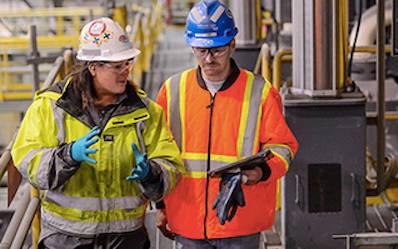

A goal for reducing greenhouse gas emissions has been reached three years ahead of time by the Canadian mining, mineral development and energy group, Teck Resources.
Teck, based in Vancouver, stated in its annual sustainability report that last year it had cut total carbon dioxide emissions by 281 kilotons since 2011. It had set a 2020 deadline for this reduction level.
The group’s other environmental claim is that its mining operations have reduced new water use by 11 per cent since 2013, and that on average water is recycled and reused four times at Teck mines.
Teck gave the figures while releasing a new water policy characterized by “consistently strong and transparent” governance and sustainable water use.
The group says it has a policy of negotiation, countering the common criticism that mining operations ignore established communities’ rights. The report says that last year Teck reached agreement with all the indigenous peoples in areas where it has mining projects.
On an even more positive note, the company records that it spent $138m (£101m, €116m) with indigenous-owned businesses in conducting its operations, including during the past three years a 48 per cent increase in procuring goods from them for steel-making coal and for the Highland Valley Copper project in British Columbia.
To highlight its gender policy Teck reports that 29 per cent of its hires last year were women. The proportion of women now in its workforce is 17 per cent, up from 15 per cent in 2016.
To mark the achievements the Dow Jones Sustainability World Index in 2017 included Teck for the eighth consecutive year.
Don Lindsay, Teck’s president and chief executive, said: “We make sustainability a part of everything we do, because we know that responsible mining and mineral development is not only the right thing to do. It is fundamental to our current and future success.
“In 2017 we were able to advance our work in sustainability and achieve strong business results, thanks to the hard work and dedication of our employees.”
Marcia Smith, senior vice-president of sustainability and external affairs, declared: “We are on track in advancing, and ultimately achieving, all of our 2020 sustainability goals.
“Guided by our sustainability strategy, we are improving our performance, including meeting our 2020 greenhouse gas emission reduction goal early, using water responsibly, and strengthening our relationships with indigenous peoples.”
Meatless Alternatives Aren’t Just Becoming “Mainstream” – They’re Making Big Bucks
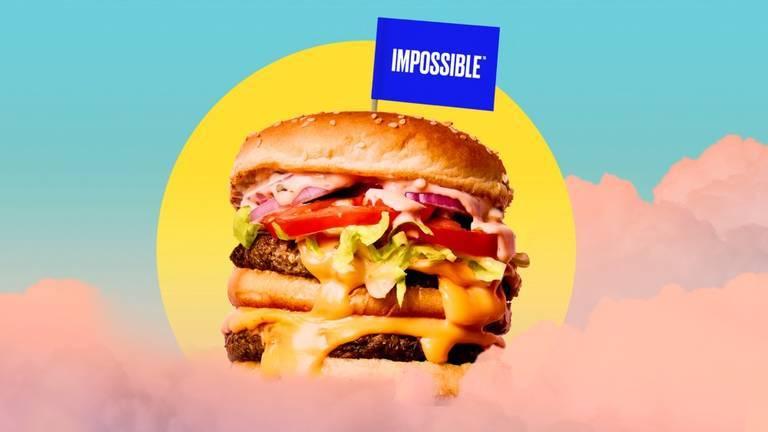

Those veggie burgers of yesteryear that you once ate to “be good,” not because you thought they tasted good, are becoming a distant memory. The quality of these plant-based foods has drastically improved, as brands such as Gardein, Beyond Meat and Impossible Foods have relished their roles as disruptors within the food industry.
These disruptors have spurred other alternative protein startups to create more innovative food products, and investors have been noticing. Last year, these companies attracted at least a quarter of a billion dollars in funding, and this trend shows no signs of abating anytime soon. For example, Impossible Foods, which has long garnered headlines for its “bloody” re-engineered fake burger, has proven that “alternative” hardly means these food items occupy a lonely corner of a menu to appease the small but growing percentage of the population who identify themselves as vegetarian or vegan.
As Impossible Foods’ senior vice president of global sales, Stephanie Lind, recently shared in Medium post, the Impossible Burger has done far more than get its foot in the door at some of the top burger chains in the U.S. – it has caused sales at many restaurants to spike dramatically.
Sure, it helped that top chefs have been wowed by the taste and texture of the Impossible Burger. The bloody yet cow-free burger has also won its share of awards, which have helped generate even more buzz for the company. But bottom line, the Impossible Burger has helped drive revenues, including at Los Angeles-based Umami Burger, which has experienced sharp increases in consumer traffic and more importantly, sales. Restaurant managers want a winner - and the Impossible Burger shines, without leaving behind a hefty environmental and public health footprint.
According to Impossible Foods, this phenomenon is not just occurring in areas where a restaurant is the only one in town serving up the Impossible Burger – the company claims restaurants deriving the most revenues from the fake burger are located in cities like New York, Chicago and L.A. that boast dozens of outlets selling the product.
But what could really make meat alternatives scale up is if fast-casual and fast food outlets start selling products such as the Impossible Burger. After all, the bloody meat-free burger for the most part is relegated to more expensive chains (scoring the Impossible Burger at Umami Burger at LAX’s Tom Bradley Terminal, for example, will set you back more than $18 after tax).
This could soon change, however, The $1.99 Impossible Slider at White Castle, launched last month, has reaped rave reviews for the most part (could a Harold and Kumar sequel be in the works?). Could a competitor soon follow? Companies such as McDonald’s, after years of sluggish sales, have performed better in recent months, but that upward trend could shift in a heartbeat.
And speaking of heart-healthy food, Business Insider has pointed out that fast food companies are missing out on what could be a $13 billion opportunity – vegan, plant-based diet alternatives within their meat and potatoes-heavy menu. If these companies buy-in, startups like Impossible Foods could scale up – and ironically, these same fast food giants long pilloried for demolishing public health and the world’s food supply could actually have a role in reducing global demand for meat – critical if the planet will be able to feed the 9 billion or so people expected here by mid-century.
Image credit: Impossible Foods
Avoiding Purpose-Washing: When, How and Where Brands Can Embed Purpose into Business, Brand and Experience


By Alison DaSilva, EVP, Purpose/CSR, Cone Communications
The evolution of responsible business has yet again taken an exciting turn as we encounter a perfect storm. Due to omnipresent social media, an absence of government leadership on critical social and environmental issues, and near-unprecedented levels of activism across demographics, social consciousness is at an all-time high. And consumers expect companies to have a more meaningful reason for being, beyond the products they create.
Now, companies are playing a critical role in solving some of the world’s most complex issues while expounding how this work serves greater missions than just feeding a bottom line. Companies are innovating by ensuring positive impact is rooted into the very bedrock of an organization – in its reason for being, or, Purpose.
At Cone, we believe Purpose is more than a mission statement or commitment of values. Purpose defines an organization’s authentic role and value in society that allows it to simultaneously grow its business and positively impact the world. It must be deeply embedded within the organization, the brand and the experience that is delivered.
For some, like Patagonia or TOMS, Purpose drives every aspect of the business and is pervasive throughout the organization. For others, their Purpose may be focused on responsible business practices or social innovation and impact. There are many ways that companies can demonstrate their Purpose in an authentic way, as long as they are clear on their objectives, goals and current and future commitments. Based on how deeply ingrained the Purpose is within organization, it can be a primary filter for your communications approach.
Because while “Purpose” is on the tip of nearly every marketer’s tongue, we must be careful to avoid the fate of other responsible business trends of bygone times –from “greenwashing” to “pinkwashing.” That’s why it’s critical that Purpose is not just a newfangled marketing tactic or flash-in-the-pan campaign, but a lens through which business decisions are made.
Once an organization identifies and operationalizes its authentic role in society, then the questions become, when, how and where to share that Purpose. Here’s how a company can bring Purpose to life through strong communications:
When: The first query practitioners often have is, “When should we be communicating our Purpose?” You can’t approach Purpose as a marketing campaign that has a start and an end, nor a tagline that gets slapped on every piece of marketing. It needs to be seamlessly integrated throughout the brand and amplified at the right moments to show how you are demonstrating or living your Purpose. While it doesn’t need to be front and center in each and every message, it should be felt. Sustainable clothing brand Reformation excels at this through making sure its Purpose is heard during specific times like Earth Day or the launch of its 2017 sustainability report (delivered entirely via email) but also throughout the year, all laddering back to the brand’s value proposition: “Being naked is the #1 most sustainable option. Reformation is #2.”
How: To authentically communicate Purpose, companies should focus not just on articulating their role in society, but also sharing the reasons to believe – or proof points – about how they are living their Purpose. Companies should humanize their Purpose to make it relevant and tangible for individuals (think Stella Artois and Water.org’s hidden-camera-esque spot featuring Matt Damon). And then they need to back that up to show the impact of their efforts, whether that is through data and metrics or heartfelt stories of beneficiaries.
Purpose defines an organization’s authentic role and value in society that allows it to simultaneously grow its business and positively impact the world. It must be deeply embedded within the organization, the brand and the experience that is delivered.
Where: For stakeholders to really feel a company’s Purpose, content should be delivered through a battery of formats and channels, creating a 360-degree experience. In fact, nearly eight-in-10 (79 percent) Americans say they are more likely to believe a company’s social and environmental commitments if that company shares its efforts in multiple ways. This helps to establish authenticity in the eyes of consumers, where more than half (58 percent) of Americans say if a company only communicates in a few channels, they are less likely to believe that company is being authentic in its commitments. When thinking of that 360-degree communications experience, companies should look across owned, earned and paid channels:
• Owned: Owned channels are the easiest to control, ensuring consistent communications. There are also myriad ways to activate from social media platforms and websites, to brick and mortar and the physical experience that is delivered. Companies that do this right exude Purpose from the very moment consumers walk in the door or pick up a product. Think of the multiple touchpoints when ordering a salad at Sweetgreen, from local farm partners featured on a blackboard to the brown takeaway bag emblazoned with the words “Passion X Purpose.” While on-pack is highly sought-after real estate for a brand, extending Purpose messages there shows a serious corporate commitment and won’t be missed. Wear Your Label clothing, a company dedicated to products that encourage conversations around mental health, come with care tags that have been transformed into “self-care tags.”
A critical component of owned communications is to start within, through internal communications. Three-quarters of American employees feel it’s important their employer shares goals, progress and achievements related to a company’s social and environmental commitment. And once employees feel engaged in their company’s Purpose, they can act as front-line ambassadors and eager amplifiers of the brand message. In fact, more than half of employees are willing to share company content and use branded hashtags with their social media networks. Timberland’s* Global Stewards Program, launched in 2006, helps to increase the reach and impact of Timberland’s responsibility efforts around the world. The Global Stewards are a team of passionate and committed employees (one or more per country in which Timberland operates) who volunteer for a two-year term, above and beyond their regular job responsibilities, to drive service and impact at a local level.
• Earned: Through earned communications, companies can share their Purpose and also participate in dialogues already taking place. Throughout the year, organizations can create tentpole campaigns around planned events, announcements or efforts. They can also use their Purpose as a guide to determine if they want to lean in and participate in issues the world is talking about in real-time, whether that is Earth Month, International Women’s Day, Black History Month.
Patagonia created a tidal wave of conversation with its announcement to sue President Trump, but the campaign laddered up to the outdoor retailer’s longstanding support of national parks and public spaces. Spurred by the influx of social media advocacy, a spark around a specific issue or topic can quickly turn into a groundswell of support for an issue. Companies should be prepared to show up and move fast if that issue is in alignment with the brand’s Purpose. This is the lens Airbnb used when word of 2017’s travel ban made headlines. The brand was able to act quickly with a statement of opposition, interviews with CEO Brian Chesky and plan to offer free lodging to refugees in limbo due to the ban because of its clear Purpose to “create belonging everywhere.”
• Paid: To create a true Purpose-driven brand experience, companies can leverage paid channels to insert their message into consumers everyday lives, interactions, routines – and newsfeeds. L.L.Bean** launched its “Be An Outsider” campaign using a traditional ad with a twist. The outdoor retailer institution deployed a full-page ad in the New York Times that utilized photochromic ink which could only be visible once the ad was brought outside. The simple activation hit home on the company’s focus “to design products that make it easier for families of all kinds to spend time outside together.” The paid-tactic was then complimented with a surround-sound experience including in-store signage, web presence and social media content.
Purpose may be the shiniest new toy in a marketer’s toolkit, but it’s far more than a tagline, quick campaign or moment-in-time effort. Purpose truly defines a company’s role in society and must be deeply embedded within the organization. When Purpose is authentic and backed by solid reasons to believe, we have the opportunity to build deeper bonds with our stakeholders – connecting on the things that truly matter most.
*Cone client
**Cone client, Cone did not work on this campaign
Originally published in CR Magazine - Summer 2018Image credit: Unsplash/Antenna
Diversey's Soap for Hope Program Changes Lives through Recycled Soap
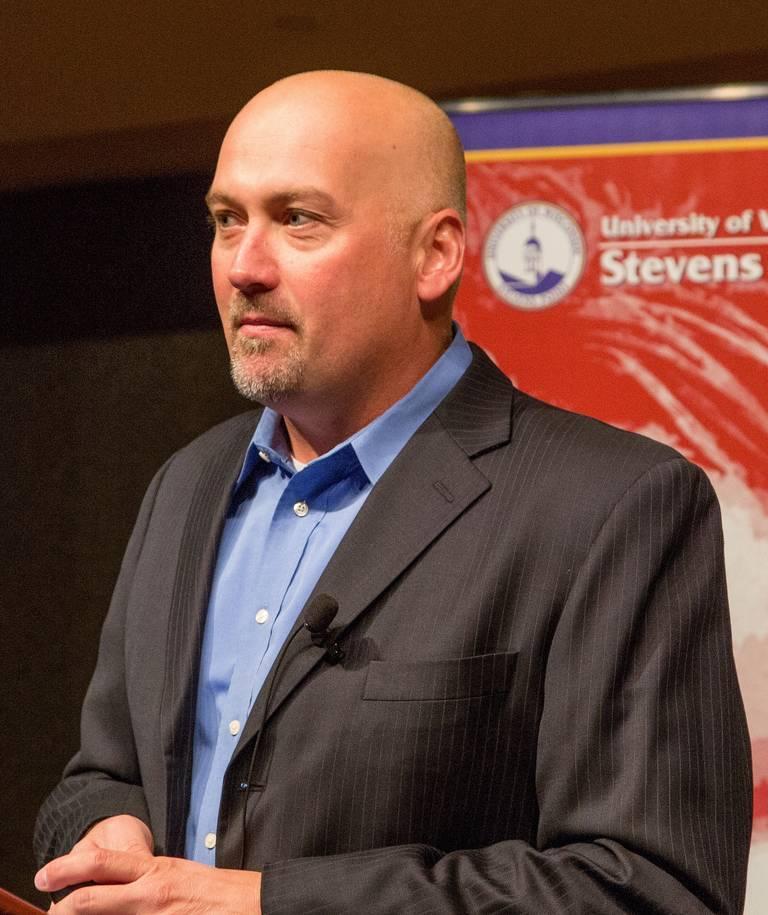

This series of articles features organizations that will be speaking at Sustainable Brands Vancouver. Click here for more.
Most of us in the developed world take soap for granted. It’s a pervasive part of our consciousness and our lifestyle: It lives in our bathrooms, our kitchens, under our sinks and in our camping supplies. It’s a necessity, but few of us in North America would think of it as a sign of affluence.
In fact, those little bars are so prevalent that we generally can’t escape them – even when we’re away from home. We’re greeted with multiple little packages of hygiene goodness every time we step into a hotel room or go to a restaurant. For about 20 percent of the world’s population, the question of what happens to all those bars of soap we leave behind after our stay aren’t a mandatory consideration; how they get recycled, and who ensures they don’t get funneled into massive landfills are issues that are often left to management.
And it’s likely that most travelers also don’t spend their well-earned days of rest pondering the connections between poverty, childhood diseases, the cost of soap and inaccessible hygiene.
But Stefan Phang does. Diversey’s Regional Director for Sustainability & Corporate Social Responsibility (CSR), for the Asia-Pacific, Middle East, Africa and Turkey Region (AMAT) realized years ago that there was way to combine those little bars with philanthropy and produce better living conditions for millions of people across the globe.
And just as important, he realized, there were ways to use those donations to teach communities about the link between good hygiene, health and a valuable community income. There were also ways that the hygiene and cleaning supply company he worked for could partner with those communities by creating shared value (CSV) that in turn, would enhance the sustainability of both the communities and Diversey.
In 2013 Phang launched what would eventually become Diversey’s Soap for Hope CSV program. Using his own networking skills and the support of Diversey, he convinced hotels to donate the discarded soap they collected from guest rooms. At the same time, he began reaching out to the small, low-income communities adjacent to the hotels to see if they would be willing to take on the unique job of recycling and remaking soap that could be distributed to low-income households.
According to Daniel Daggett, PhD, Diversey’s executive director for sustainability and CSR, that out-of-the-box thinking helped launch a program that is now having international impact.
“Soap for Hope is one of our signature CSV programs,” explained Daggett, who said the innovative program has given Diversey the ability to partner with a wide spectrum of customers that use its services in the hospitality industry.
Daggett said the CSV program has many benefits, both for Diversey and its customers. For the hotels, it offers a sustainable way to ensure that the used soap doesn’t end up in the landfill. And it allows them to participate in a local initiative that improves their communities.
For Diversey, it provides an emblematic way of demonstrating the company’s values.
“[It] is really important for Diversey,” said Daggett, “not only because it helps identify our culture, what we stand for, but because we also see the real value of it in establishing relationships with our customers.
“It really ticks all of the boxes of sustainability and has a great environmental story. It has a great social story and it makes good business sense for us.”
Daggett said Diversey provides all of the equipment, materials and the processes for the community to recycle the soap.
“The idea is to be able to set this very, very small manufacturing station ... anywhere,” said Daggett. “The concept is you can go into a rural village where they may have problems with access to clean water and not a lot of resources, and show up and say, ‘Look, here’s a business. It can provide a small amount of income and source of hygiene for your village.’ That’s exactly what the target is of Soap for Hope.”
Plus, it affords a door to teaching kids about the benefits of handwashing at an early age.
“Very frequently the Soap for Hope program will work in concert with a school,” said Daggett. “We teach [the children] how to wash their hands using the right amount of time. It sounds trivial, but there are actually [Center for Disease Control] requirements and regulations, even guidelines for how hands should be washed. Obviously we want kids to learn how to do it effectively. So there is often an educational element to it and kids get excited about something that may seem commonplace.”
And that may be Soap for Hope’s greatest accomplishment: community engagement. With the help of nonprofits, Soap for Hope is able to incentivize communities and at the same time, teach the youngest generations the processes and importance of incorporating hygiene into everyday habits.
Doctors have found that reducing child mortality numbers in developing countries doesn’t just depend on finding ways to improve access to food, but increasing hygiene and sanitation in disadvantaged communities as well. According to UNICEF, as many as 2,000 children under the age of five die every day from diarrhea-related diseases. Some 80 percent of those deaths are linked to unclean water sources and poor sanitation and hygiene. Lack of ability to improve their living circumstances because of unemployment and barriers to education create an endemic cycle of poverty for many of the world’s poorest communities
Soap for Hope is already addressing some of those statistics, said Daggett, who pointed out that the small income often affords access to things we take for granted. By linking luxury hotels that have an unneeded resource with its nearby low-income neighbors, Soap for Hope not only helps ensure that the discarded materials don’t feed the continuation of a landfill, but gives kids a vision of a better life as they grow up. That “very small income” that the community earns through recycling bars of soap Daggett said, can often times be the deciding factor to whether or not a child goes to school, learns to read and has the potential to create a sustainable, income-earning career.
So far, the Soap for Hope program operates in 39 countries; more than 150 cities participate, and some 539 hotels support the recycling program. Daggett admits that not every country or community is likely to be a perfect fit for the program. Stringent manufacturing laws in the U.S. for example would make it difficult to set up a hand-operated soap manufacturing unit in a rural community without involved licensing processes and fees. But a growing number of communities in developing nations where endemic poverty from unemployment can have catastrophic impact are now benefiting from the program. Hotels and adjacent communities in Latin America and Asia now participate, with India being the latest country to come aboard.
Readers can learn more about Diversey’s Soap for Hope and its plans for its CSV programs this June at the Sustainable Brands conference in Vancouver, BC.
https://youtu.be/vwibfmUz8Ck
3BL Media is a Major Media Partner for SB’18 Vancouver. As a valued member of the community, you can receive 20% off a pass of your choice with code ‘JoinUs’. Learn more about SB’18 Vancouver and register today.
Images courtesy of Diversey, Inc.
Building a Sustainable Business for a Healthier World


Merck KGaA, Darmstadt, Germany has donated 150 million tablets for treating a serious tropical disease in 26 African countries last year.
The company describes its program to fight schistosomiasis, a urinary and intestinal infection caused by parasitic worms, in its corporate sustainability report for 2017.
Merck KGaA, Darmstadt, Germany reports that during the past 10 years it has given enough medication through the World Health Organization to treat more than 150 million patients, mainly schoolchildren.
It reinforced its efforts last year with the formation of the Global Health Institute with the aim of improving the health of under-served populations in developing countries.
As one of its projects the institute is now in a partnership with other bodies to produce treatments for schistosomiasis in children under six.
The company's community benefit work last year included a €5.1m investment ($6m, £4.5m) in educational and cultural activities. More than 2,500 employees volunteered nearly 14,000 hours to give science teaching.
Projects outlined in the report were pilots to train teachers and give them the tools to ignite their students’ enthusiasm for science. One was set up in India last year and others are due to follow in Chile, Kenya and Tanzania this year.
In some areas, the report says, the company provided solar lighting equipment, reducing energy use in air-conditioned buildings by up to 40 per cent. On the science side, Merck KGaA, Darmstadt, Germany offers more than 750 products meeting green chemistry principles and providing good environmental alternatives to conventional products.
The 2017 corporate responsibility report was the first by Merck KGaA, Darmstadt, Germany to meet the requirements for a combined separate non-financial report laid down by the CSR Directive Implementation Act, which Germany implemented last year.
Petra Wicklandt, head of corporate affairs, said: “This CR report coincides with our 350th anniversary and underscores our focus on the dialogue with our partners who, just like us, see sustainability not just as an obligation but as a critical factor for our future success.
“From fighting the tropical disease schistosomiasis and manufacturing eco-friendly products such as organic photovoltaics to our school sponsorships, which are aimed at sparking young people’s interest in science, we cover a kaleidoscope of topics.
“The report gives external stakeholders a prominent voice, as well as actively involving its readers.”
BNEF: Electric Buses Are Poised for Spectacular Growth Worldwide
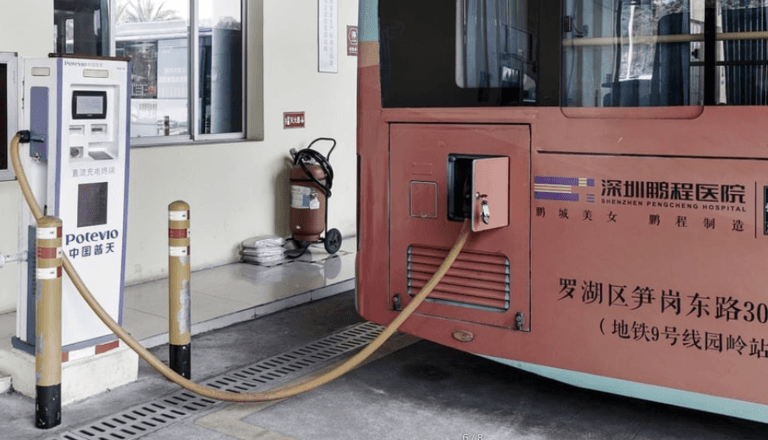

For years, critics have dismissed clean energy technologies like solar and wind power to be too inefficient, too expensive and too inaccessible to scale.
We have seen how that argument has changed in recent years as renewables have come down in price to become cost-competitive with conventional fuels.
The same can now be said about electric vehicles (EVs) – and according to Bloomberg New Energy Finance (BNEF), electric buses will advance at even a faster clip than electric cars for passengers. “In almost all charging configurations, e-buses will have a lower total cost of ownership than conventional municipal buses by 2019,” says BNEF’s latest report on the outlook for electric vehicles.
Sales of electric vehicles across the globe will surge in the coming years – the trend is already undeniable. Just a few years ago, total sales of EVs only totaled a few hundred thousand. But once often derided as “toys,” EVs now have momentum: BNEF forecasts total sales of EVs this year to reach 1.6 million worldwide.
Price, of course, is a large reason why vehicles with all-electric drive trains are becoming more popular. When BNEF first estimated EV battery prices back in 2010, the average cost was $1,000 per kilowatt-hour (kWh). That price has since plunged to an average of $209/kWh – a 79 percent drop. Meanwhile, batteries have become more efficient and powerful, with their energy intensity ticking up an average of 5 to 7 percent a year. It also does not hurt that consumers are warming up to improved designs, and we are not just talking about Tesla – witness future models such as Volkswagen’s promised I.D. Buzz, which harkens back to the VW camper vans of yesteryear.
Yet it is the rapid growth of electric buses that makes this report such a compelling read. Worldwide, BNEF expects bus fleets worldwide to go all-electric faster than light-duty vehicles.
It should be no surprise that China is largely behind this shift.
With all the talk in North America and Europe about “smart cities,” we are seeing their emergence in China before anywhere else on the planet. Many Chinese cities’ public transportation systems, insists BNEF, are on track to have their entire bus fleets go all-electric by 2020, if not sooner. Why? “China’s push is as much about industrial policy as it is about environmental or energy security concerns,” says the report’s authors. “China is building national champions and an e-mobility ecosystem for what it sees as a major strategic industry over the coming decades.”
Subsidies can only explain part of this transformation in the world’s most populous country. National subsidies will be gone by 2020, but automakers doing business China are subjected to a “new energy credit system,” in which automakers are held to an EV manufacturing quota – or will have to purchase credits if they fall short of their mandates.
BNEF expects this mobility trend to transcend China. Batteries will continue to become more efficient, and fleet managers are already finding the operational costs of electric buses to be cheaper than those powered by diesel or other conventional fuels. By 2030, BNEF expects 84 percent of all municipal bus sales to be all-electric; currently, China accounts for 99 percent of e-bus acquisitions worldwide.
Hiccups remain as EVs displace more vehicles with an internal combustion engine (ICE). A convenient charging infrastructure for drivers is still lacking in many municipalities, which still leaves many consumers with "range anxiety." Nevertheless, BNEF is bullish on the future of all-electric. By 2040, 55 percent of all new cars and one-third of the world’s total fleet will be EVs. Their upfront costs will be far more competitive with conventional vehicles by 2024 - and will reach cost parity by the end of next decade.
The results will be a net gain for the environment, too, as BNEF forecasts EVs to reduce the consumption of daily transportation fuel by 7.3 million barrels daily by 2040.
Image credit: BNEF
Diversity and Inclusion: Past, Present, and Future


As social movements across the country continue to shape global conversations around equity, the spotlight and opportunity have been thrust onto the business sector to reflect the values society cares about most. For the first time ever, this generation of the U.S. workforce is demanding a more genuine commitment to diversity and inclusion, one that represents the spectrum of our population and the various social movements happening in and across the communities they serve
The Civil Rights era, the fight for Women’s Rights, and countless other movements have laid the groundwork for how the business community engages in D&I today. In 1948, President Truman desegregated the armed forces with EO 9981, making discrimination based on race, color, religion or natural origin illegal for all members of the armed services. Nearly two decades later, The Civil Rights Act of 1964 made it illegal for any business to practice discriminatory hiring, or firing, practices. Fast forward some 48 years to Pao v. Kleiner Perkins: Even though Ellen Pao lost this landmark case, she succeeded in bringing gender discrimination in the workplace to the forefront of public conversation.
Since the advent of the dot.com era, technology, and tech companies as we know it, D&I has experienced a resurgence. The concept of the “whistle blower” was once reserved for issues of national security, ie: Watergate, WikiLeaks, and the Chelsea Manning case. However, in recent years the concept has been used to expose inequality in the workplace. In February 2017, Susan Fowler published the now viral essay, “Reflecting on one very, very strange year at Uber,” calling the company out for their sexist work environment. Google has come under fire in recent years as well when then Google employee James Damore’s erratic manifesto on ‘women’s neuroticism’ also went viral.
D&I is no longer black and white, it is now a part of a larger dialogue about equity for all who come to the table with diverse perspectives.
D&I is no longer black and white, it is now a part of a larger dialogue about equity for all who come to the table with diverse perspectives. While D&I was once conveniently buried deep within the pages of the annual reports of our top organizations, the public conversation has changed the way that companies across industries engage with the issue.
Earlier this year, Pew Research Center published a report on equity and diversity in the STEM workplace. They found that African Americans who work in science, technology, engineering and math fields are more likely than other STEM workers from other racial or ethnic backgrounds to say they have faced discrimination on the job. The experiences of women also highlight the glaring inequalities in male-dominated STEM workplaces. Not to mention that women - women of color in particular - have been well documented for shedding light on the reality that there is a glaring lack of funding for founders of color.
CEO of Marca Studio and Clinical Professor of Marketing for the Bard MBA in Sustainability program, Jorge Fontanez, shared three critical insights on the trends that we’re seeing in the D&I space today:
1. CEO leadership is an opportunity Fontanez points out that trust in organizations is at an all time low, but trust in CEOs, however, is up. This trust provides an opportunity for leaders to speak up and out about equity in the workplace. Fontanez shares a recent example, “CEO of Salesforce, Marc Benioff, was recently in a 60 minutes interview speaking to how Salesforce is attempting to create equity in respect to pay. They have invested something like six million dollars or more to make sure that women and men are paid equally in the post that they are in.”
2. Retention Representation is no longer enough. Success in D&I in the future will be centered around retention. Fontanez explains, “D&I in its name focuses on inclusion. It’s important to recognize that the focus on inclusion is as much about who’s at the table as it is to create organizations where employees wanting to stay.”
3. Culture It will be the role of companies now and in the future to create more welcoming workplaces. Often times companies recruit diverse talent, but don’t think to re-create a culture where diverse talent can thrive. Fontanez explains how retention and culture overlap, “This is a different dynamic, particularly for a generation who has in some ways navigated their careers going from one company to another and gaining experience in a very different way than the baby boomer generation who stuck around for 25 years until retirement; it’s leads to a lot of institutional knowledge being lost. Culture is what should be addressed as a result and more so over the next 20 years.”
More often than not, leaders within the D&I movement say issues of retention are about more than just cultivating a strong pipeline of diverse candidates. D&I should be about creating a company culture that not only brings in young, diverse, talent but also knows how to create avenues for success. Fontanez makes it a point to regularly ask his MBA students the critical question that many in the CR space often wrestle with, “are corporations responsible for advancing social progress?” Although there’s no one size fits all solution, it has been said that social progress is a topic this generation of the American workforce cares about, and wants to see reflected in their everyday work environment.
As millennials rise in the ranks of corporate leadership, office cultures will change. Looking ahead, the key to a thriving organization will be one that makes room for diverse ideas, backgrounds and experiences, and re-creates a model of success that redefines and strengthens opportunity for all.
Originally published in CR Magazine - Summer 2018New 'Carbon Free' Aluminum Production Venture Backed by Apple Inc.


Aluminum is the hidden ingredient in much of today's technology. It’s light, pliable, durable and continuously mined. In 2010, Rio Tinto, mined 3,551,000 metric tons and that product was then manufactured into phones, computers, cars, aircraft and yes, foil. China, the world’s largest manufacturer of electronic parts and products, was also the top purveyor of aluminum in 2017, securing 52.9 percent while the U.S., known for its own electronic prowess, purchased only 11 percent of the world’s output.
But smelting aluminum is also a monumental producer of carbon, largely due to the amount of electricity it requires during production. According to the Australian Aluminum Council, which oversees its own robust aluminum industry, more than 80 percent of greenhouse gasses in smelting are related to the amount of electricity needed in production.
A lot of technology has gone into streamlining how aluminum is made in recent decades, which comes from the metal bauxite and undergoes several steps of production to reach its final product. But aluminum smelting is still costly environmentally. It’s also one of the world’s only light-weight metals that can meet a wide spectrum of technological needs.
So Apple Inc., which uses aluminum in its products, is getting behind a new venture that would be aimed at developing an emissions-free method for smelting aluminum. The project joins the U.S.’ largest aluminum producer, Alcoa, Inc. and the world’s second-largest miner, Rio Tinto, in a bid to revamp the way that aluminum is processed.
The research venture, named Elysis, will be based in Montreal, Quebec, Canada and is being funded from a consortium of public and private sources. Apple is contributing CAD $13 million (US $10 m), while the Canadian and Quebec governments are backing a total of CAD $120 m (US $93 m). Alcoa and Rio will be contributing CAD $55m/US $42.7m). The project will initially employ 100 people and is expected to create at least another 1,000 jobs by 2030.
Apple has been on a mission to reduce its environmental footprint, including its dependence on high-emission producing technology. In recent years it has developed ways to recycle aluminum from iPhones and searched for other ways to reduce its dependence on mined materials. So it’s not a surprise that according to Apple, the company played an instrumental part in “facilitating” the venture and stands to benefit from the new technology, which could also boost Alcoa and Rio’s own sustainability ventures.
Alcoa has also been striving in recent years to transform its sustainability record and demonstrate a concerted investment in the areas it does business. It’s a marked turnaround from the 1980s and earlier, when the company suffered from criticisms about its environmental protection processes.
Rio Tinto has also laid out sustainability goals and says it is focused on reducing the impacts of its business investments. But it is still facing criticism for its handling of several mining ventures, the latest being pollution in Bingham Canyon, Utah and Bougainville, Papua New Guinea, where local residents accuse the company of abandoning mining pollution.
The company is also under scrutiny for conflicts over its handling of union grievances and human rights issues.
Perhaps Apple Inc.’s support of the project and the public-private investments put forth will help highlight the fact that corporate sustainability is a well-rounded investment that is balanced by not only better research and technology, but an unrelenting dedication to minimizing its social impacts.
Flickr image: Kārlis Dambrāns
Amazon Ramps Up Diversity Priorities at the Board Level
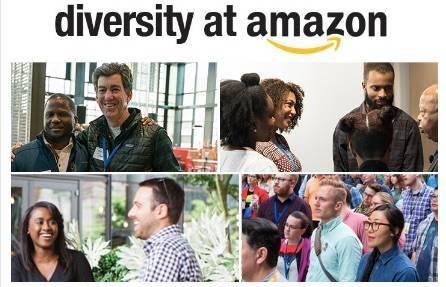

Amazon's sustainability efforts may be enigmatic to those who look for transparency in CSR reports, but they've made great strides in areas such as packaging and energy. Now, diversity has made its way up the priority list to the board level, with Amazon committing to filling more board positions with women and minorities in the coming years.
Amazon's current 10 member board is all white with three women. In a global environment where companies are increasingly scrutinized for their attention to diversity in leadership, Amazon's proactive stance is a welcome step. It's even more noteworthy in the tech sector which remains stubbornly dominated by white men.
The new policy, filed with the SEC, requires the board's nominating committee to include "a slate of diverse candidates, including women and minorities" for any position that opens. The policy is reminiscent of the National Football League's "Rooney Rule" which requires minority consideration in filling all top coaching positions.
Amazon's decision didn't come out of nowhere, however. Activist shareholders led by CtW Investment Group introduced a resolution recommending the new rule one week ago. Amazon originally spoke out against the resolution but employee pressure as well as a letter writing campaign by The Congressional Black Caucus and Congressional Hispanic Caucus ultimately convinced the company to change their tune and adopt the new policy.
Why was Amazon opposed to the change in the first place? We may never know, but we've written about why paying attention to diversity makes business sense more times that we can shake a stick at (see here, and here for starters). Simply put, different kinds of people with different backgrounds bring new ideas to the table that would be less likely to emerge in a monoculture. That's always good in the long run.
It will still take time for Amazon's new policy to bear fruit but we can say with a high degree of confidence they're moving in the right direction.
Photo: Amazon
LBGT Rights in the U.S.: Here Today, Gone Tomorrow?


When it comes to advocacy, companies have a choice to make. They can subscribe to economist Milton Friedman’s view that “the social responsibility of business is to increase its profits”, and that using corporate resources to advocate for social causes is not appropriate. Alternatively, they can recognize that companies are merely facets of society, comprised of people who must live and thrive in the same human-rights battlegrounds as activists, journalists and politicians.
Many companies have already acknowledged this fact, and have joined in the movement to create a society that will enable them to succeed. Nowhere is this more apparent than in the global struggle to advance the rights of lesbian, gay, bisexual and transgender (LGBT) people. Recent political developments—the election of Donald Trump as US president foremost among them—have cast doubt over the dramatic progress made in LGBT rights. Corporate executives are beginning to wake up to this fact: 57% of executives in this year’s iteration of The Economist Intelligence Unit’s annual Pride and Prejudice survey agree that “if left unchallenged, the current global political climate could undo progress made in LGBT inclusion.” Respondents in North America, where the election of Mr. Trump shocked many in the business community, perceive this trend particularly acutely.
Yet amid the conflicts over race, religion, gender, ethnicity and nationality that flood newspaper headlines on a near-daily basis, many fear LGBT rights will be overshadowed. Our executive panel suggests these worries may be justified: only 6% believe LGBT rights are being most negatively impacted by the current global political climate. Only 5% selected LGBT rights as the area in which the public will demand the most change this year.
It is precisely for this reason that LGBT-friendly companies cannot afford to grow complacent in the belief that society will continue to progress in a favorable direction. Among executives that believe companies will become more prominent as agents of progress for LGBT rights in three years’ time, the majority cited “increasingly positive attitudes toward LGBT people in society” as the main reason for this shift. Yet this rose-tinted future is hardly guaranteed—research released in January by GLAAD, a non-governmental organization, showed public tolerance of LGBT people in the US decreasing for the first time in four years. Meanwhile, the Trump administration has launched fresh assaults on transgender rights, and persecution against LGBT people overall has risen to alarming levels in other places, from Indonesia to Chechnya.
Companies can and should speak out. Advocacy can take various forms, from advertising campaigns depicting LGBT people to donations to local LGBT-rights organizations. Exercising influence via business networks is also a promising tactic. Hong Kong’s LGBT+ Interbank Forum, for example, brings together a multitude of voices in pushing policies with the local government, which has not proven particularly receptive to LGBT causes. Groups like these can also facilitate knowledge transfer between companies with established track records on LGBT rights and their peers that are just starting out on their advocacy journeys.
This is particularly crucial given that companies that do not consider themselves role models for LGBT diversity and inclusion also generally do not expect the environment for advocacy to get more amenable, according to our survey. In other words, companies that are currently “in the shadows” on this issue expect to stay there in future. This places all the more onus on the shoulders of advocacy champions to take the lead in educating the overall corporate ecosystem about the importance of pushing LGBT-friendly practices and policies.
There is much they can teach: the survey suggests companies engaging publicly on LGBT rights may outperform their peers on various business competitiveness factors. This is hardly surprising; LGBT inclusiveness within companies has been shown to associate with increased innovation, productivity and stock performance. There is no reason to believe that external LGBT-friendliness would correlate with corporate strength any less so than the internal variety.
Having the confidence to be an advocate is often the natural by-product of an inclusive company culture; many of the strongest LGBT champions hardly consider their advocacy work to be a choice at all, but rather part of their corporate DNA. Yet there is little denying that this kind of open, diverse mindset that underpins LGBT rights is under assault the world over. No company, even the most forward-thinking, can insulate itself from these pressures. Companies indeed have a choice, and it is incumbent on them to play their part in ensuring that the simple desire of people to be able to love who they wish to love, and to identify with the gender they feel rather than that assigned to them, remains protected the world over.

On May 24, 2018, The Economist Events will host its third annual Pride and Prejudice Summit, a 24-hour event hosted by The Economist Events across three cities – Hong Kong, London and New York. This year’s summit will continue to challenge and push forward the global conversation around lesbian, gay, bisexual and transgender (LGBT) diversity and inclusion, with a focus on evaluating how advocacy can translate these discussions into meaningful action to improve the legal rights and societal treatment of LGBT people worldwide.
Pride and Prejudice is sponsored by AlixPartners, Morgan Stanley, T. Rowe Price, William Blair, Goldman Sachs, ABN AMRO Bank N.V., American Airlines, Biogen, Nomura, Ogilvy & Mather, Heidrick & Struggles, Manulife Financial Corporation and the United Nations Development Programme. Porter Novelli and Kreab are the public relations partners.
For more information on the full program and speakers, visit the event website.
Image credits: Sharon McCutcheon and Ana Moreno via Unsplash